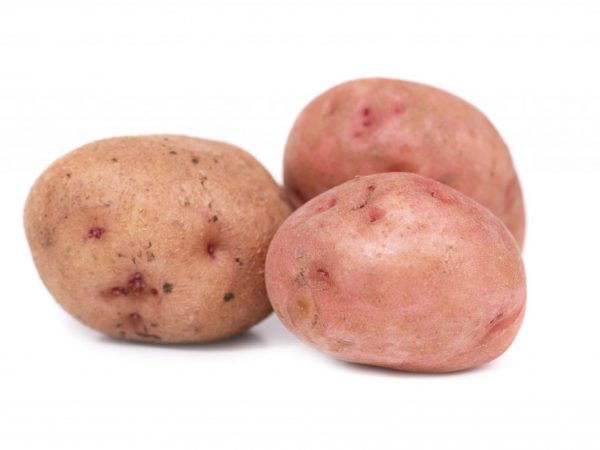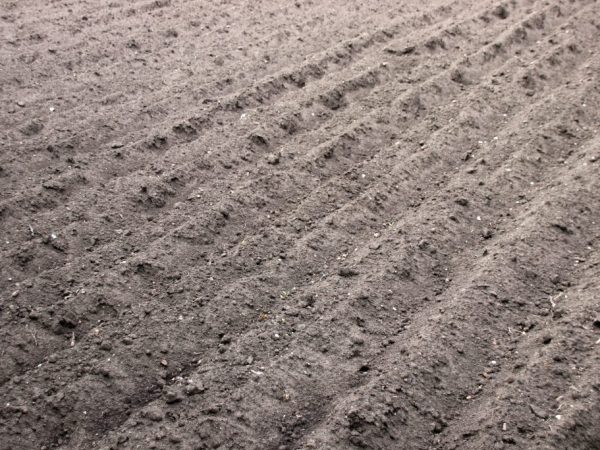Characteristics of Aurora potatoes
The Aurora potato variety is suitable for gardeners who are interested in cultivating a crop with excellent table qualities. Loose and flavorful, this potato is good for a wide variety of dishes.

Characteristics of Aurora potatoes
Qualitative characteristics, simple agricultural technology make this root crop indispensable for growing both in summer cottages and on an industrial scale.
Features of the variety
The Aurora variety is a product of Russian selection. In terms of ripening - mid-season: 80-85 days pass from the emergence of seedlings to the ripening of the crop.
Patentee - Vsevolozhsk breeding station (Leningrad region). The variety passed state registration in 2006, and is recommended for cultivation in most areas of the European part of Russia (except for the extreme south) and in the Far East.
The nightshade bushes are tall, semi-erect. The leaf is large, light green, wavy at the edges. The corolla of the flowers are red-violet in color. Medium-sized tubers have an oval shape, weight - from 90 to 130 g. Under a thin, smooth, light brown skin - creamy flesh. The eyes are small, pink. 10-15 root crops are formed on one bush. Aurora potatoes according to the description of vegetable growers, subject to good care, can tie up to 30 tubers under a bush.
Advantages and disadvantages
This type of "earthen apple" (as the plant was called in Russia in the 18th century) has many advantages, which makes it in demand among summer residents and gardeners. Aurora potatoes have many advantages:
- excellent taste: high starch content (13-17%) makes it suitable for cooking in different ways: boiling, frying, baking;
- high yield of the variety - more than 40 t / ha;
- good keeping quality (94%) under the most common storage conditions (temperature 2-5 ° C);
- drought resistance; yields even in summer drought in the absence of irrigation.
There are practically no disadvantages of the variety. The only thing that growers point out is that if you want to get fresh potatoes at the beginning of the season, this variety will not work due to the medium ripening time.
Planting potatoes
Aurora potatoes are characterized by good adaptability to growing conditions. But a high yield can be obtained only if proper agricultural practices are followed.
Soil preparation
Caring for a new crop begins with the preparation of seed and soil. For the cultivation of this variety, floodplain, sandy loam and sod-podzolic loamy soils are most suitable.
You need to take care of the readiness of the site for planting a plant in the fall. The crop gives the best yield on soils that have a neutral or slightly alkaline reaction. Acidified soils are alkalized by scattering wood ash or chalk.

The soil must be fertilized before planting.
To improve fertility, the soil is fertilized with rotted manure at the rate of 4-5 buckets per 10 square meters and superphosphate (1 glass per 10 square meters). In the fall, the site is dug up, since potatoes are responsive not only to the chemical composition of the soil, but also to looseness. On heavy clay soils, the root system does not develop well, which means that the yield decreases.
If it was not possible to fertilize the site in the fall, this can be done in the spring directly at planting. However, fresh manure cannot be used. Humus or compost and a little superphosphate are added to the hole under each bush.
The preparation of tubers consists in their vernalization. 30-35 days before the expected planting date, the seeds are taken out of the basement and germinated in the light in a cool room. To green the tubers, they are laid out in boxes in 1-2 layers. The best seed potatoes are about the size of a large chicken egg. And the requirements for sprouts are short (up to 2 cm), thick. Vegetable growers categorically do not recommend germinating seed in a dark room, because sprouts will form thin and elongated, which will affect the quality of seedlings.
Planting potatoes
You can plant Aurora potatoes on a garden bed when the topsoil has warmed up to a temperature of 10 ° C. Connoisseurs of folk signs recommend paying attention to the birch: if the leaves on the tree have begun to bloom, you can start planting.
For prophylaxis, seeds must be treated with special preparations before planting. Insecticides and fungicides will help prevent diseases, damage to tubers and young shoots by pests (Colorado potato beetle, wireworm, aphid, etc.). There are triple-action drugs that also stimulate the development of the plant.
Vegetable growers are advised to lay holes at a distance of 60-80 cm from one another so that tall bushes have sufficient space for development. The planting depth of tubers depends on climatic conditions and soil quality. The soil is heavy, the climate is humid - we deepen no more than 10 cm, in the south, in loose soils - 15-20 cm. It is important not to damage the shoots when planting.
Potato care
To a large extent, the yield of mid-season potatoes of the Aurora variety depends on the timely and high-quality implementation of agrotechnical measures, the main of which are:
- watering;
- hilling;
- top dressing;
- pest control.
Consider the features of each procedure in relation to this culture.
Watering

Potato beds are not watered until the first germination, as the tuber contains enough water and nutrients for the plant to develop initially. The first watering is recommended to be carried out 5-7 days after the mass appearance of aboveground shoots.
The plant needs a lot of moisture. Do not allow the land to dry out, this will significantly reduce the yield. Therefore, watered at least once a week. Watering rates: before flowering - 2-3 liters for each bush, during budding and tying tubers - 3-5 liters. In hot summer, it is better to water in the evening.
Hilling
A special technique that allows you to preserve moisture, stimulates the tying of tubers, protects against overheating - hilling. It is carried out when the young bush has grown to 10-12 cm. Hilling is necessarily preceded by loosening, destruction of weeds in the beds. Immediately after hilling, the planting is watered.
The second hilling is carried out when the stems have reached 15-20 cm. In this case, the ground must be well fluffed. Experts believe that it is this crop that needs to be hilled as often as possible and sprinkled higher so that tall bushes do not fall, and there is enough space for the development of tubers.
Fertilizer
Potatoes are fed at least three times during the summer: after germination, during budding, during flowering and tying of tubers. The plant needs a complex of nutrients, therefore both organic and inorganic fertilizers are needed.
After hilling and watering, inorganic fertilizers are poured into the holes: saltpeter, urea, nitroammophos. It is important to take into account that before the appearance of buds, the culture needs more nitrogen fertilizers, and during the tuberization period - in potash. Effective, according to gardeners, is feeding with chicken droppings, prepared independently using this technology:
- dry droppings are placed in a container, poured with water in a ratio of 1:10 and covered tightly;
- leave to ferment for 3-4 days;
- for pouring, a solution prepared from 1 liter of slurry and 10 liters of water is used.
Fertilization with such a homemade preparation is carried out only after abundant watering. For each plant, up to 1 liter of solution is consumed.
Treatment against diseases and pests
Among the advantages of the Aurora variety is immunity to such common potato diseases as cancer and golden nematode. The culture is quite resistant to late blight.
It is important not only treatment, but also the prevention of diseases, which consists in the timely destruction of tops after harvesting the previous harvest, pre-sowing treatment of tubers, timely loosening of the soil. To combat diseases (alternaria, scab, black leg, peronosporosis, mosaic), there are many complex drugs, for example, Ridomil, Ditan, Kuprostat and others. These contact fungicides should remain on the tops for at least 2-3 hours. If it rains, the treatment should be repeated.
For pest control, mechanical methods are used (Colorado potato beetle is collected), the beds are treated with modern low-toxic insecticides (Bankol, Regent, Match).
Conclusion
Harvesting is carried out in dry weather, when the tops are dry, and the tubers are easily separated from the root lobe. Aurora surprises with its fertility: from one bush you can get up to 3 kg of potatoes.
According to its characteristics, the Russian Aurora is not inferior to the product of German selection - the Gala potato variety. And according to some indicators - and more preferable for our climatic conditions. Reviews of vegetable growers speak of its popularity in different regions of Russia.


